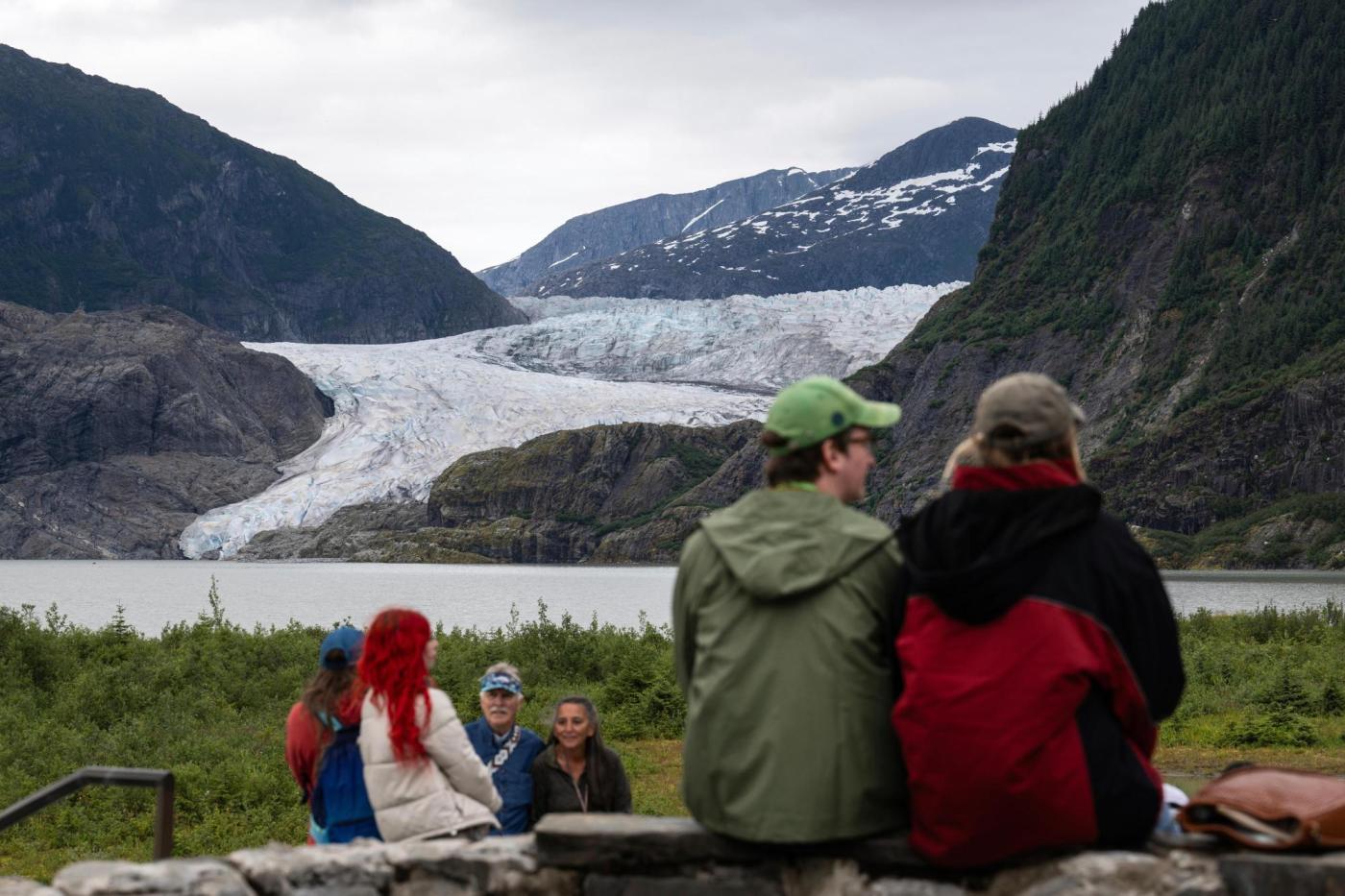
By CEDAR ATTANASIO, Associated Press
Record floodwaters released by the nearby Mendenhall Glacier crested Wednesday in a river that flows through Alaska’s capital city with no immediate reports of major damage, though officials warned that high water would remain for several hours.
Juneau officials reported water pooling on a handful of streets, and some seeped under newly erected barriers designed to protect riverfront homes. Some residents in the flood zone heeded warnings and evacuated after water started escaping the glacier’s ice dam on Tuesday.
The Mendenhall Glacier is about 12 miles from Juneau, home to 30,000 people, and is a popular tourist attraction due to its proximity to Alaska’s capital city and easy access on walking trails. Homes on the city’s outskirts are within miles of Mendenhall Lake, which sits below the glacier, and many front the Mendenhall River, into which the glacial outburst is flowing.
The river hit major flood stage Wednesday morning, peaking around 8 a.m. and surpassing a flood level of 16 feet (5 meters), according to preliminary measurements, breaking a record set last year.
The map above locates Mendenhall Glacier, which has begun releasing floodwater toward Juneau, Alaska, where some areas have been urged to evacuate. (AP Digital Embed)
Basin flooding is a yearly worry
Flooding from the basin has become an annual concern since 2011, and in recent years has swept away houses and swamped hundreds of homes. Government agencies installed temporary barriers this year in hopes of protecting several hundred homes in the inundation area from widespread damage.
The flooding happens because a smaller glacier near Mendenhall Glacier retreated — a casualty of the warming climate — and left a basin that fills with rainwater and snowmelt each spring and summer. When the water creates enough pressure, it forces its way under or around the ice dam created by the Mendenhall Glacier, enters Mendenhall Lake and eventually flows down the Mendenhall River, as it did Tuesday.
Before the basin began overtopping, the water level was rising rapidly — as much as 4 feet per day during especially sunny or rainy days, according to the National Weather Service.
The city saw successive years of record flooding in 2023 and 2024 — with the river last August cresting at 15.99 feet, about 1 foot over the prior record set a year earlier — and flooding extending farther into the Mendenhall Valley. This year’s flooding had been predicted to crest at between 16.3 and 16.8 feet.
Last year, nearly 300 residences were damaged.
A large outburst can release some 15 billion gallons of water, according to the University of Alaska Southeast and Alaska Climate Adaptation Science Center. That’s the equivalent of nearly 23,000 Olympic-size swimming pools. During last year’s flood, the flow rate in the rushing Mendenhall River was about half that of Niagara Falls, the researchers say.
A temporary levee is installed
City officials responded to concerns from property owners this year by working with state, federal and tribal entities to install a temporary levee along roughly 2.5 miles (4 kilometers) of riverbank in an attempt to guard against widespread flooding. The 10,000 “Hesco” barriers are essentially giant sandbags intended to protect more than 460 properties completely during an 18-foot flood event, said emergency manager Ryan O’Shaughnessy.
Related Articles
Donald Trump says Intel CEO has ‘amazing story,’ sets Cabinet talks
ESPN ditches Pay-TV first model with $30-a-month streaming app
Venus Williams gets a US Open wild card at age 45 and will be the oldest in singles since 1981
Elon Musk loses court bid to dismiss OpenAI’s harassment claim
NFL appeals Nevada Supreme Court ruling allowing Jon Gruden’s lawsuit to proceed
The U.S. Army Corps of Engineers is at the start of what’s expected to be a yearslong process of studying conditions in the region and examining options for a more permanent solution, such as a levee. The timeline has angered some residents, who say it’s unreasonable.
Outburst floods are expected to continue as long as the Mendenhall Glacier acts as an ice dam to seal off the basin, which could span another 25 to 60 years, according to the university and science center researchers.
Associated Press writer Becky Bohrer in Juneau contributed to this report.